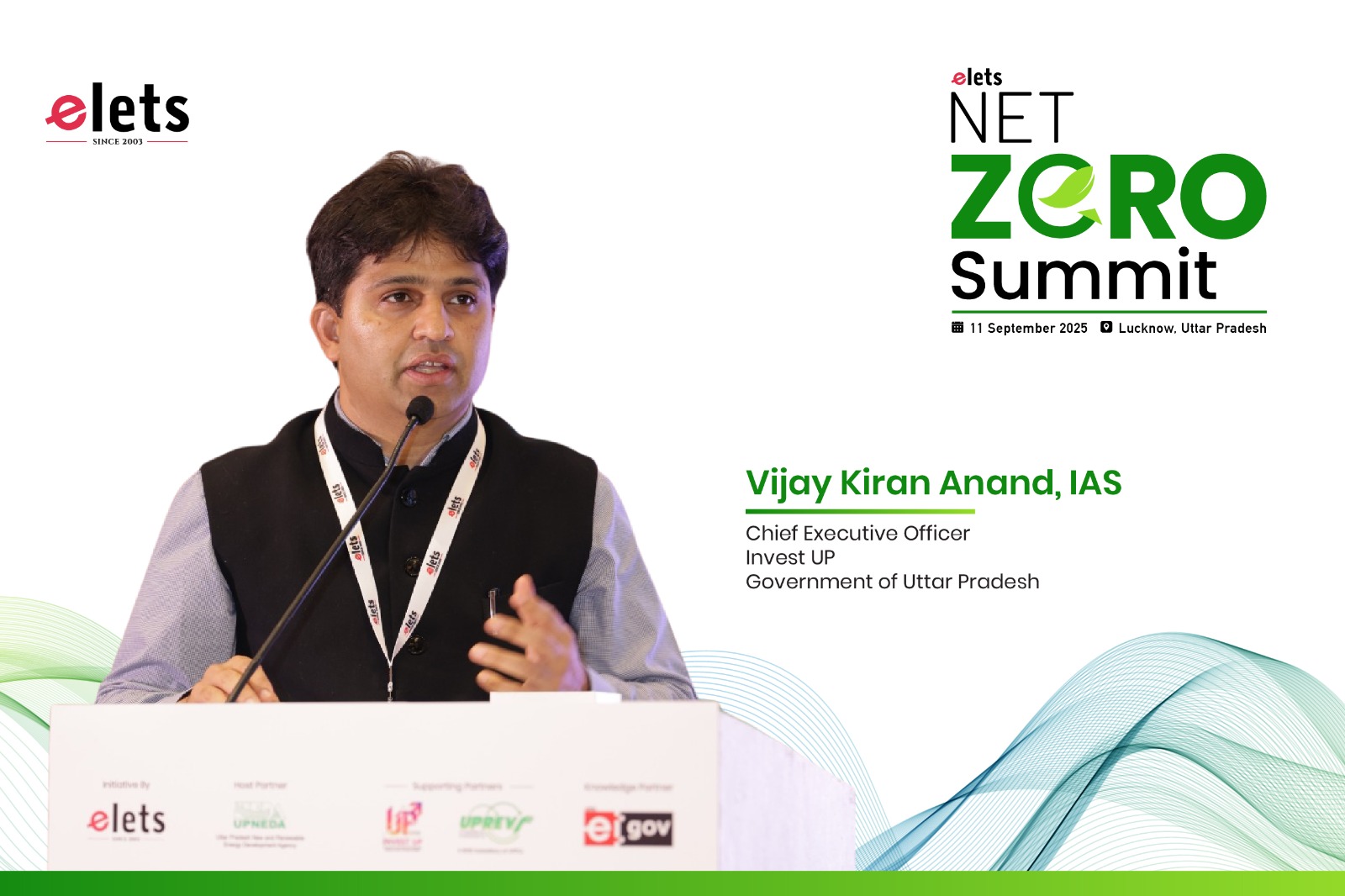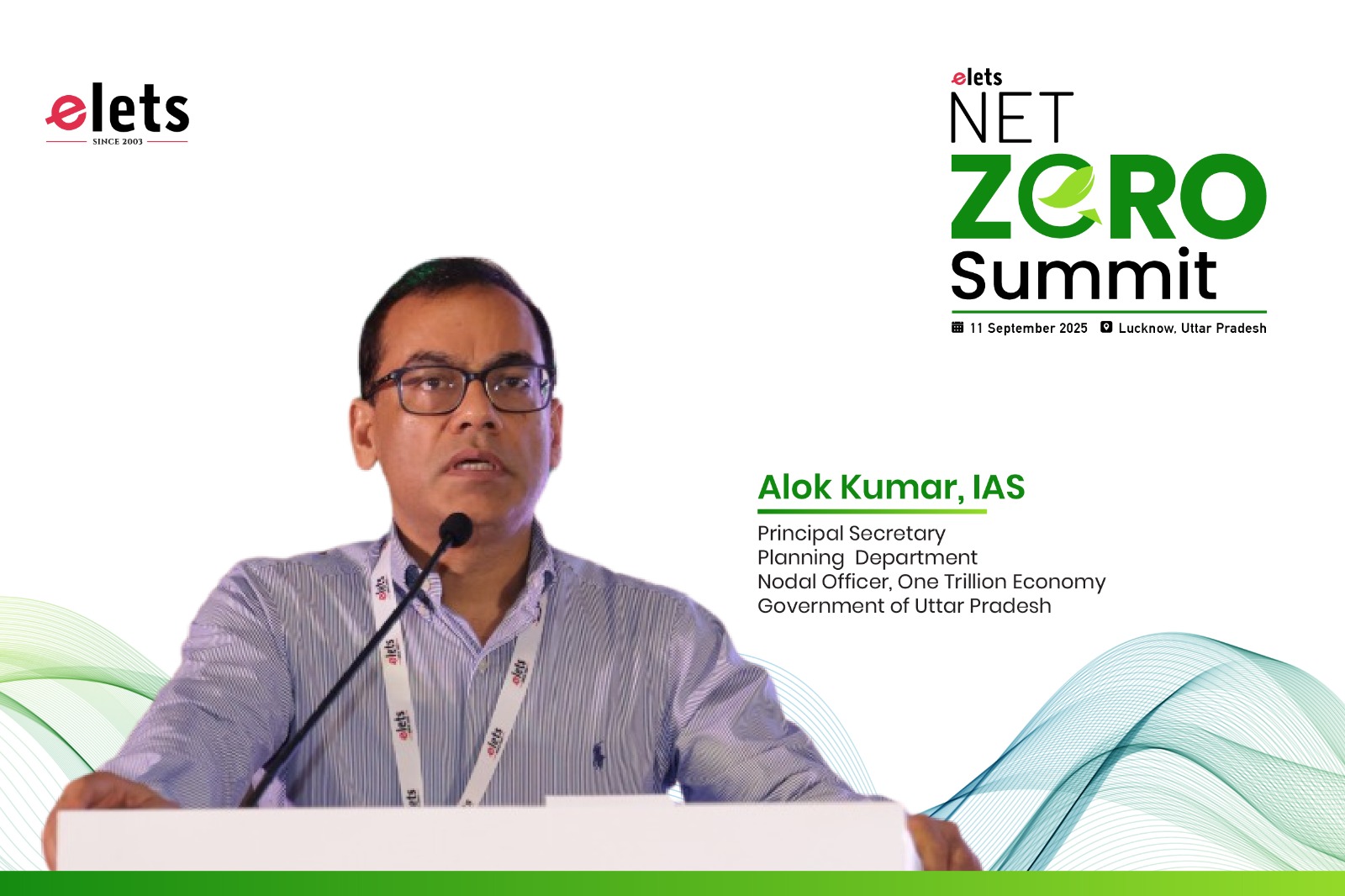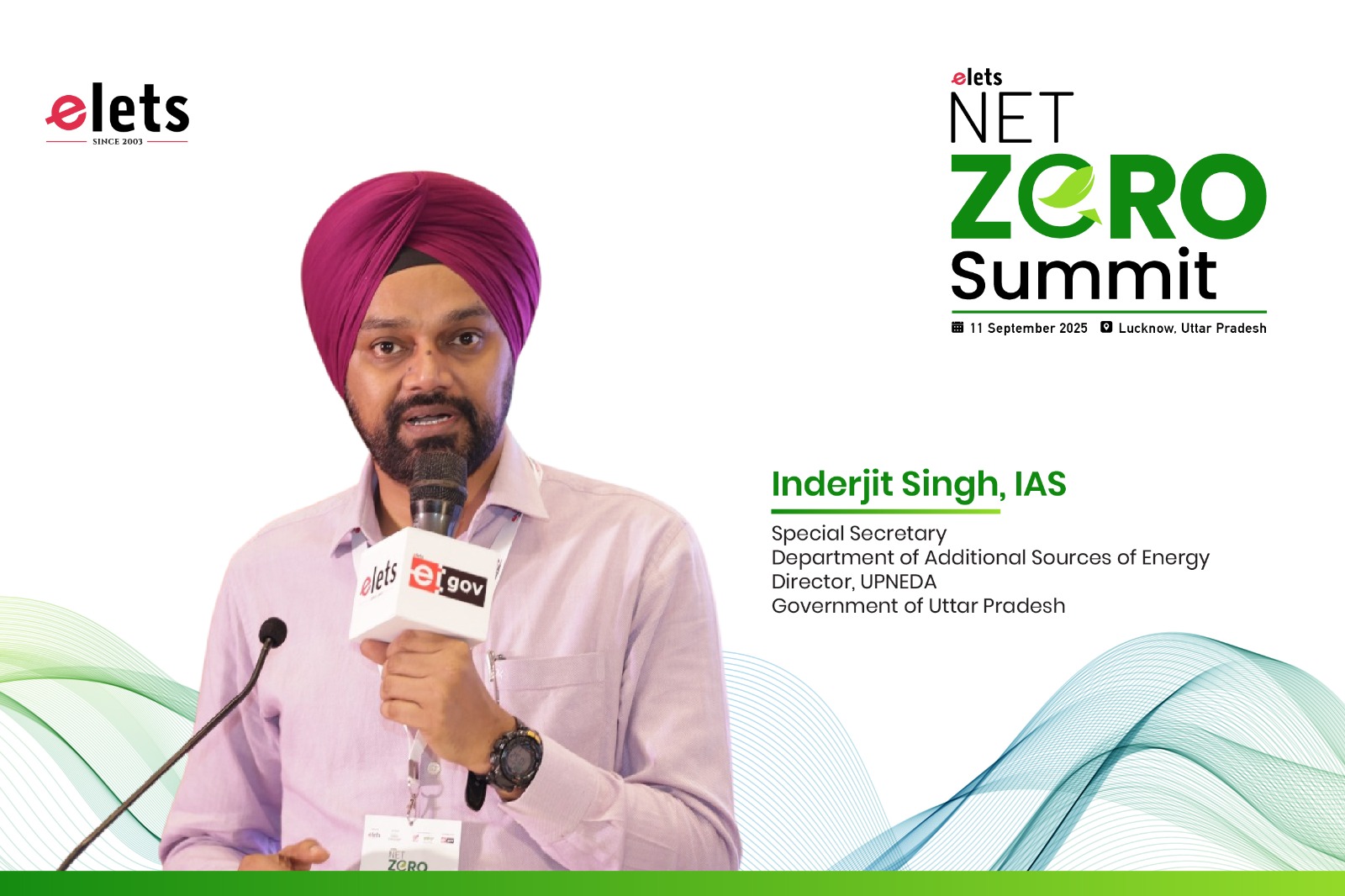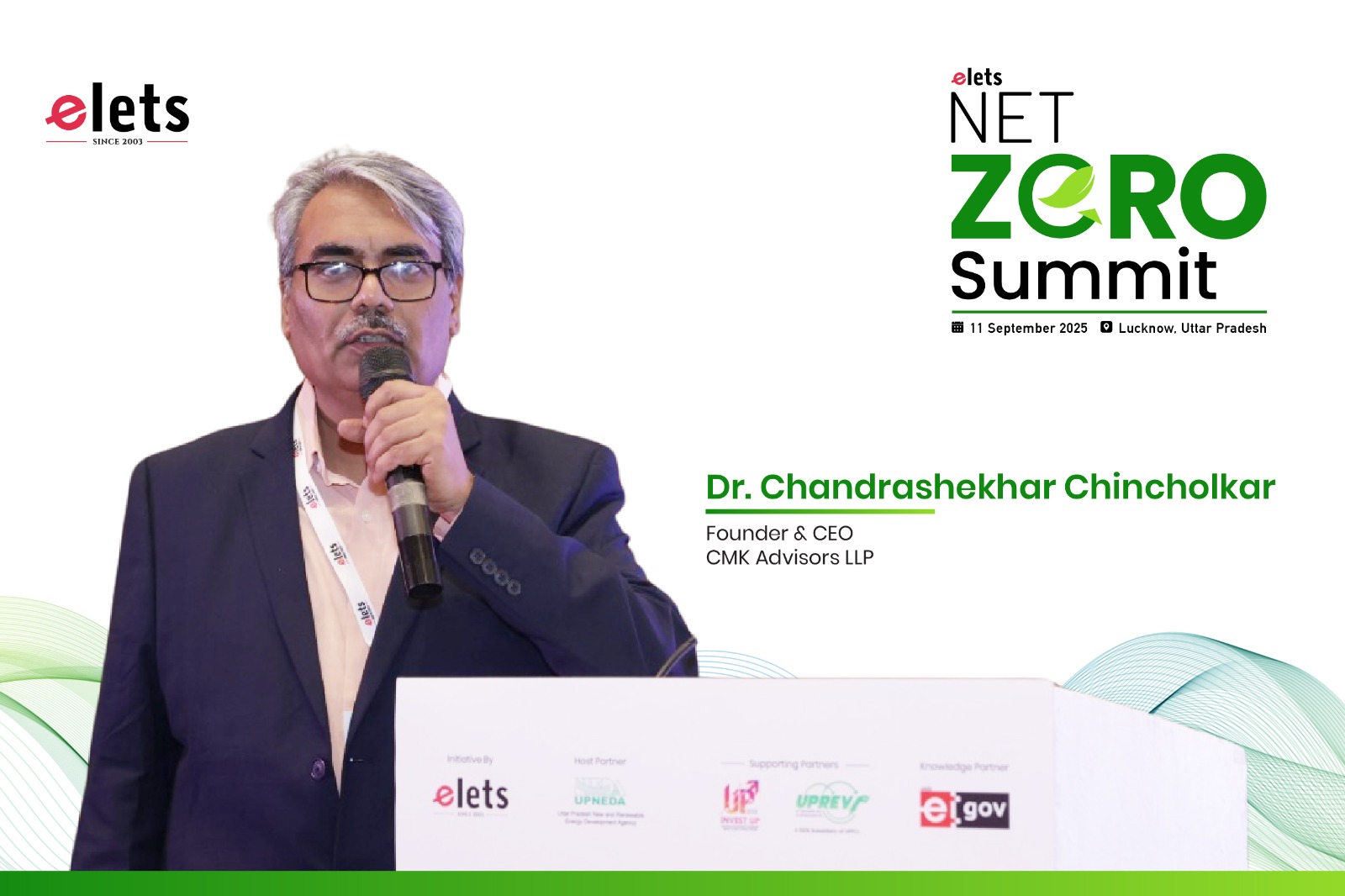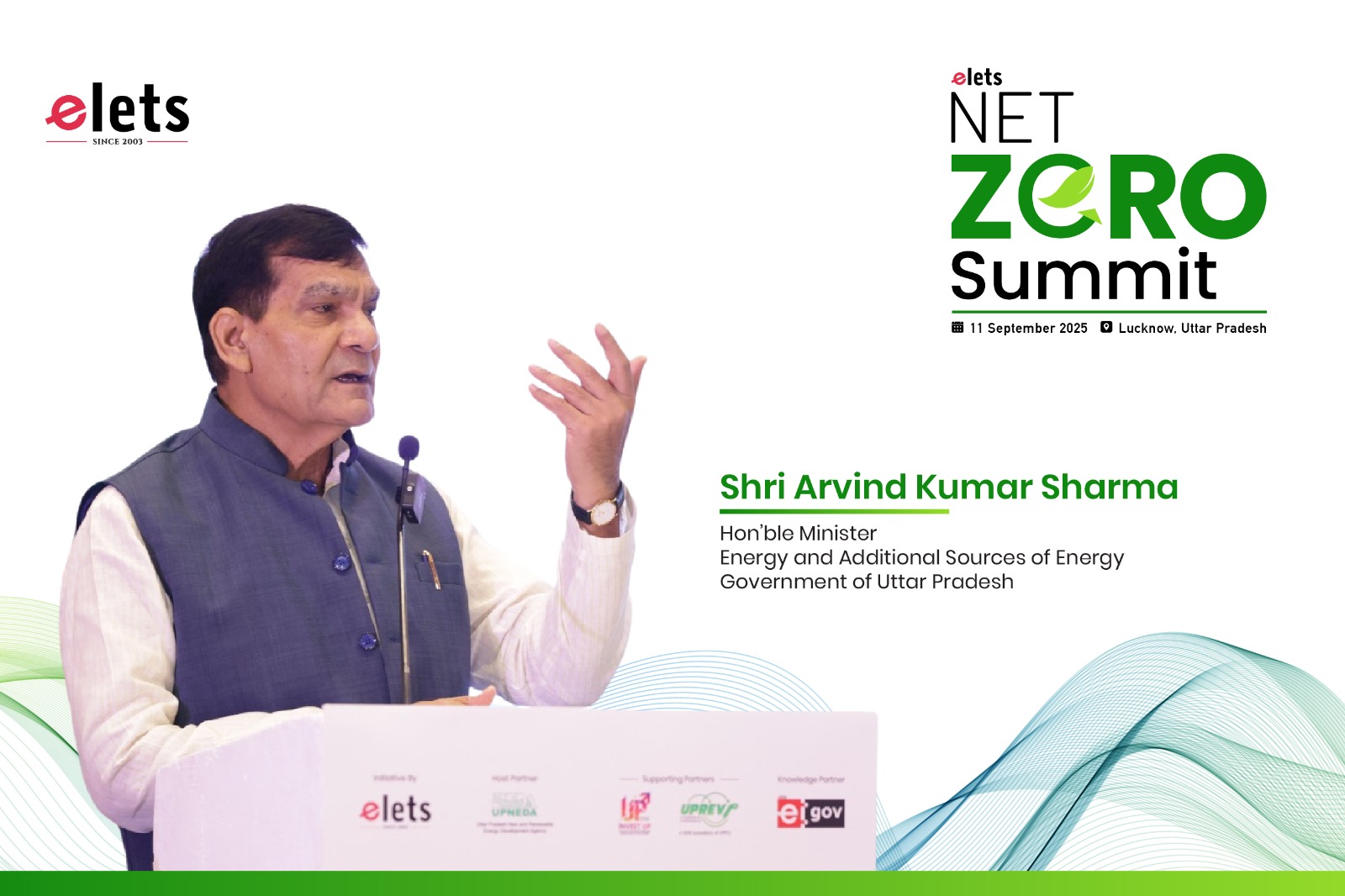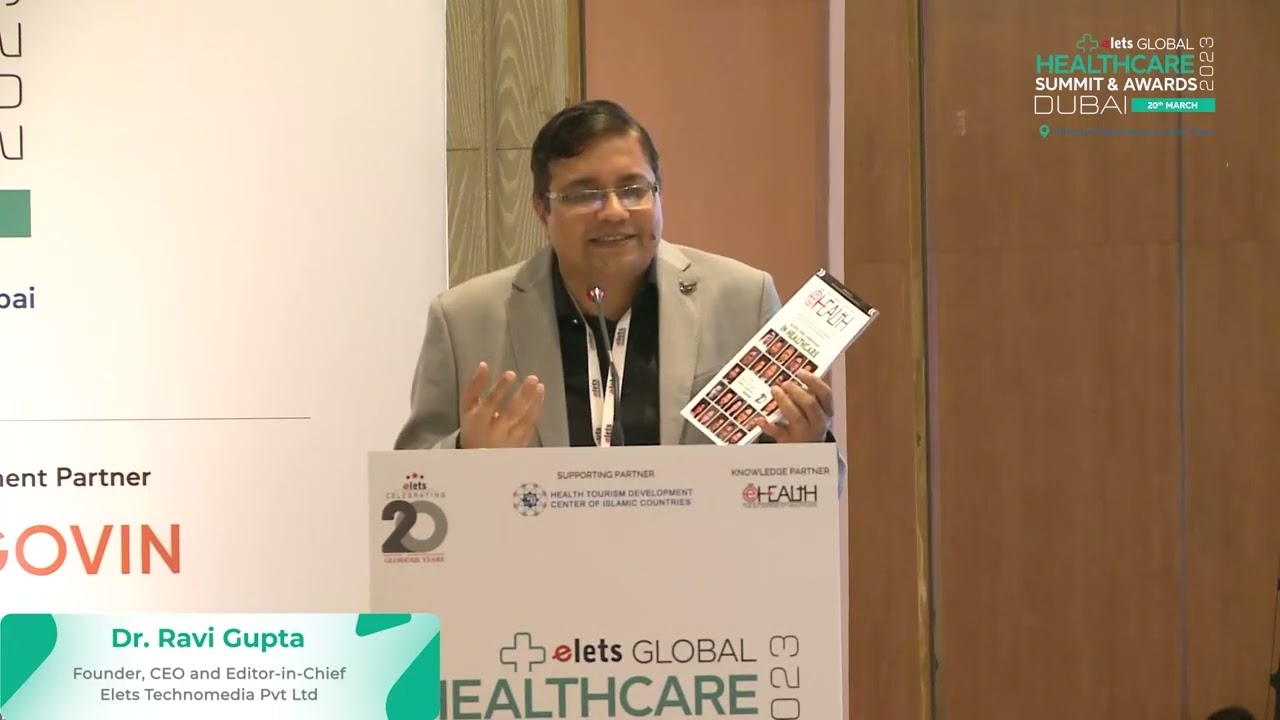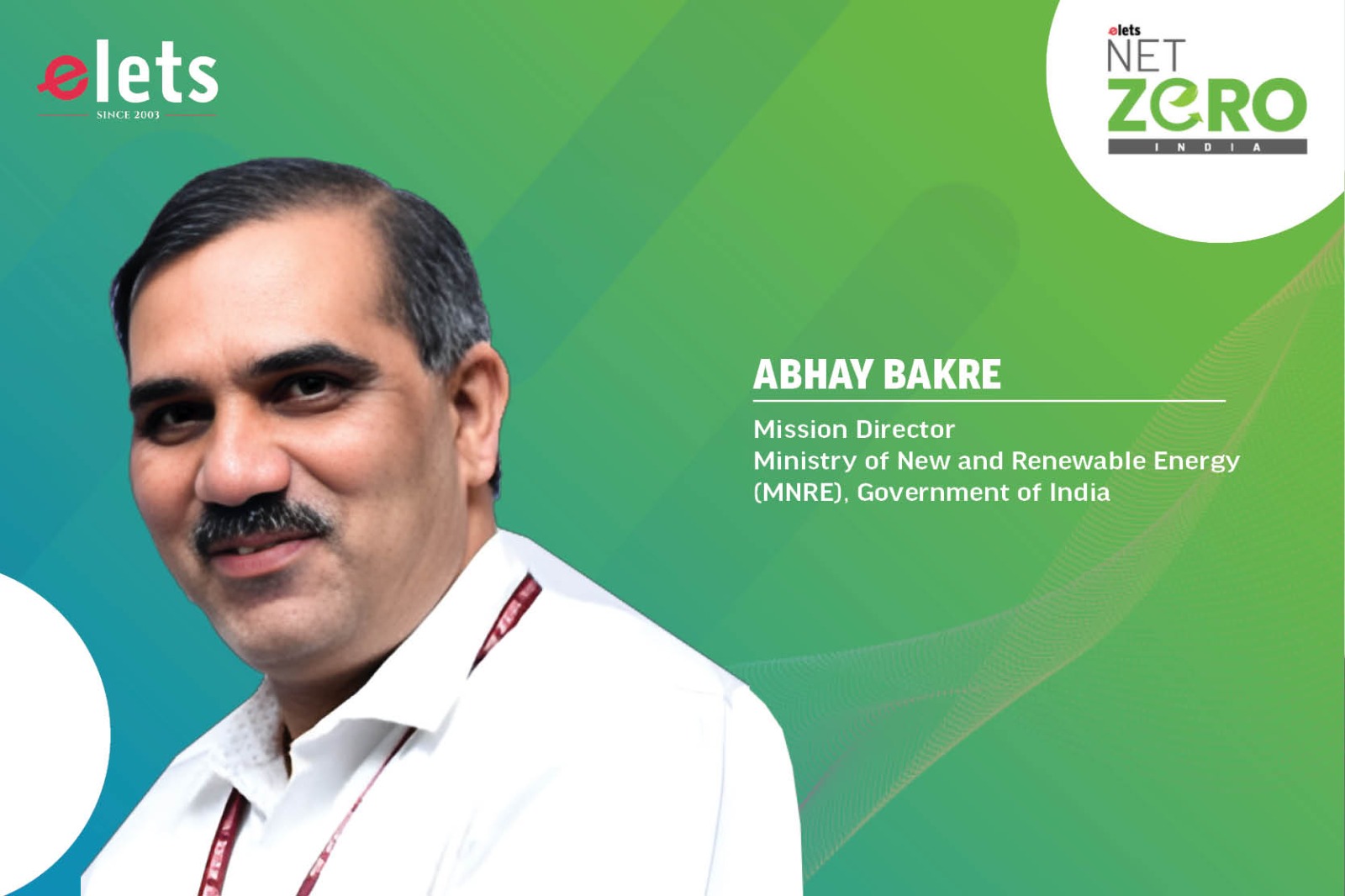
India is positioning itself as a global leader in green hydrogen with ambitious goals to scale up production and reduce dependency on imported fossil fuels. The government is accelerating approvals, connecting plants to a vast grid, and integrating green hydrogen into key sectors like steel, cement, and fertilizers. With strong policy support and incentives, India is promoting innovation while ensuring competitive pricing for both domestic and international markets. In this regard, Abhay Bakre, Mission Director, Ministry of New and Renewable Energy (MNRE), Government of India shares more in an exclusive interaction with Nijhum Rudra of Elets News Network (ENN).
India has set ambitious goals to become a global leader in green hydrogen. What are some of the key steps the government is taking to promote the domestic green hydrogen market?
India aims to become a global leader in green hydrogen by rapidly deploying plants and developing skilled manpower. The country is accelerating approvals and connecting plants to a vast grid network that can transmit over 120 gigawatts of power. At the last mile, green hydrogen will be integrated into power utilities through competitive bidding, ensuring reliable and robust renewable power on an unprecedented scale. Key sectors like steel, cement, petroleum, natural gas, and fertilizers present significant opportunities for hydrogen adoption. Refineries and fertilizer plants are already exploring green hydrogen, and the steel sector will follow. This will drive steady demand and support the production ecosystem. India also seeks to become a global export hub for green hydrogen by ensuring competitive pricing for both domestic and international markets.
With the rising demand for green hydrogen, how can India effectively scale its hydrogen production while ensuring sustainability and economic viability?
We are actively engaging in discussions with potential offtake countries and have many agreements in the works. While our companies are in direct contact with them, we are also conducting bilateral talks with these countries. On the eastern side, we are focused on Singapore, Korea, and Japan, while on the western side, we are in discussions with the UK and Europe.
The key question is whether industry-to-industry discussions are enough. Many of these potential buyers have ambitious emission reduction targets, and achieving these within their own countries would be costly. Therefore, they are looking for low-cost alternatives, such as purchasing clean hydrogen or green ammonia. Given their targets for 2030, they will need significant quantities of green hydrogen or green ammonia for their industries before that time to meet their goals. If they fail to secure this supply, they won’t be able to reach their targets.
Our focus is on providing this on an economic scale to ensure that their demand is met in a timely and sustainable manner.
India is heavily reliant on imports for its energy needs. How can the domestic green hydrogen market contribute to reducing dependency on foreign energy sources in the long term?
A key objective of India’s Green Hydrogen Mission is to reduce dependence on imports. For the first time, India is positioned to expand its energy mix with a domestically available energy source that can potentially replace imported fossil fuels. The supply chain for hydrogen production should, as far as possible, rely on domestic industries. To support this, we have already incentivized the creation of 3,000 megawatts of electrolyzer capacity annually. We expect that by 2026-27, this domestic manufacturing capacity will be operational, leading to a significant reduction in the cost of electrolyzers in India. The announced electrolyzer manufacturing capacity is over 15 gigawatts, indicating a strong domestic demand. Most of these electrolyzers will be used for domestic hydrogen production, but there will also be export potential. Similarly, with initiatives like the PLI for solar and wind energy, renewable energy is already being scaled up significantly, helping meet India’s ambitious 500-gigawatt non-fossil fuel target. The supply of electricity, supported by PLI programs for solar panel and module manufacturing, is already being addressed. Over time, India is expected to reduce its reliance on imported components for hydrogen production. By 2030 and beyond, most of the required components should be domestically available.
The country is accelerating approvals and connecting plants to a vast grid network that can transmit over 120 gigawatts of power.
Can you highlight the key initiatives and missions your ministry is currently pursuing to accelerate India’s transition towards clean and renewable energy, especially in the context of the global push for sustainability?
On behalf of MNRE, we are working with a whole-of-government approach, particularly for the Green Hydrogen Mission. When it comes to India’s energy transition strategy, the focus is clear: transitioning from fossil fuels to non-fossil fuels. Identifying the potential sectors for this shift is a key part of the plan. MNRE, along with the Ministry of Steel, has taken a leading role in advancing the Green Hydrogen Mission, ensuring that green hydrogen is produced using renewable energy and converted into a green molecule.
The Ministry of Steel is contributing by developing technologies for green steel production. Both ministries are collaborating to introduce new technologies and define what constitutes green steel. The Ministry of Steel has also established a star rating system to reduce CO2 emissions in steel production—from 2.2 kg of CO2 per kg of steel to 2.0, 1.8, and eventually 1.6 kg of CO2 per kg of steel. Incentives are being offered to encourage this transition.
This collaboration will help develop a strong supply chain, contributing to a successful energy transition. Additionally, India’s growing economy complements these efforts. Steel production capacity, currently around 150-160 million tons, is expected to reach 300 million tons by 2030. As this growth occurs, a significant portion of steel production will gradually transition to green or low-carbon steel. This is just one example of how various ministries are working together to drive energy transition through synergy.
What role do you see electrification playing in India’s energy transition, and how will renewable energy contribute to the electricity share by 2030 or 2032, especially with energy storage?
Electrification is a crucial aspect of our energy transition. Initially, electrification was around 18%, but it has now increased to about 23-24%, and we expect it to reach around 27%. It plays a key role in the shift from fossil fuels to electricity. Currently, around one-fourth of our electricity comes from renewable energy, and by 2030 or 2032, we anticipate this share will grow to approximately 40%. In terms of capacity, renewables will likely account for more than 50%, with a target range between 55-60%. However, when we factor in energy storage, the share of renewable electricity is expected to rise to around 40%.
Also Read :- BEE’S game – changing initiatives paving the way for india’s green future
Could you share some of the recent success stories or milestones achieved in the clean energy sector, and how these achievements are attracting both domestic and international investments?
In the clean energy sector, the key factor is the abundant availability of solar and wind power, combined with the necessary transmission capacity. If MNRE had focused only on these aspects, we wouldn’t be seeing the progress we have today. The comprehensive approach has led to a significant increase in the availability of clean energy, especially during the daytime, along with advancements in solar heating and biogas. These are critical areas for growth. Additionally, the potential of using biomass and biogas to produce green hydrogen is now being explored.
Another major driver is electric mobility. While MNRE plays an indirect role by providing clean energy, this can be leveraged to support the growing electric vehicle market. The 30% electric mobility target for 2030 is well within reach, particularly in sectors like three-wheelers and two-wheelers, where battery swapping is already being implemented. The increased availability of electricity and green energy is strengthening consumer confidence, especially among those who have traditionally relied on petrol and LPG. This shift in consumer mindset is one of the biggest successes of MNRE and the broader clean energy sector.
We expect that by 2026-27, this domestic manufacturing capacity will be operational, leading to a significant reduction in the cost of electrolyzers in India.
As the green hydrogen market grows, how do you see the role of policy and regulatory frameworks evolving to support innovation and investment in the hydrogen sector in India?
Innovation and investment are closely linked, and policy support plays a key role in both. While policies can encourage innovation by providing guidelines, research opportunities, and market signals, they are also essential in attracting investments. For example, in sectors like solar and electric mobility, clear policy signals, such as guidelines for storage and other technologies, motivate research and innovation by showing where the government’s interests lie. However, to scale these innovations and bring them into the mainstream, strong policies are needed to not only support supply-side investments but also to stimulate demand. Without a demanddriven approach, investments will struggle to materialise, and innovations won’t reach their full potential.
Be a part of Elets Collaborative Initiatives. Join Us for Upcoming Events and explore business opportunities. Like us on Facebook , connect with us on LinkedIn and follow us on Twitter, Instagram.
"Exciting news! Elets technomedia is now on WhatsApp Channels Subscribe today by clicking the link and stay updated with the latest insights!" Click here!




